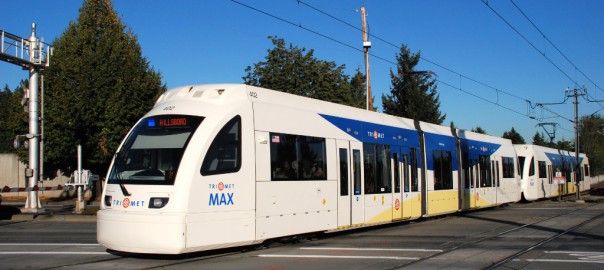Metropolitan Planning Organizations (MPO) were created in 1962 for cities with greater than 50,000 population to assist with transportation development and city planning. Idaho has several MPOs, all managed by unelected individuals and who are in charge of designing local transportation and city development. MPOs receive funds from from several sources including the federal Department of Transportation (DOT). MPOs have morphed into quite powerful organizations over the years and they all have the same goals for city planning.
Using the Treasure Valley MPO, Community Planning Association of Southwest Idaho (COMPASS) as an example, you can see the many members and agencies who participate and are involved in “planning services”. Being city planners many COMPASS employees are members of the American Planning Association (APA) and COMPASS partners with the Idaho APA. Note they also partner with the Urban Land Institute (ULI), and Idaho Smart Growth.
Look over the Communities in Motion 2040 plan adopted and implemented by COMPASS. Note that it includes walking, dense housing, mass transportation, open space, parks, housing, jobs, etc. COMPASS has a complete list of objectives they are actively working on to complete. Notice also they partner with Idaho Green Building Council (a chapter of the United States Green Building Council, UN Non-governmental organization (NGO), and Army Corp of Engineers which also partners with the United Nations (UN).
One would think that DOT only involves transportation issues however as seen here it is heavily involved in how cities are planned because they partner with Housing & Urban Development (HUD) and the Environmental Protection Agency (EPA). These agencies literally dictate how our cities are designed and built even calling themselves a “Partnership for Sustainable Communities” helping MPOs achieve this goal. On page 2 of this COMPASS document an application was being processed to obtain funding for a sustainable community planning grant. To get any money their requirements are mandated. The Gardner Company, previously noted for using LEED, that is UN, designed buildings has their hands right in the mix.
There are several principle elements of sustainable communities, here are five:
- mass transportation, ie: using buses or trains, not cars
- dense housing, ie: small high rise apartments above businesses
- mixed use development, ie: all services within walking distance
- biking and walking to destinations, ie:no need for a car
- open space, ie: closing city boundaries to further growth, also known as preventing “urban sprawl“, Boise is particularly aggressive about locking up land around the city to prevent future growth
So what does any of this have to do with the UN or even how it affects Idahoans or the cities they live in?
It should first be noted that the APA is a certified UN NGO and partners with UN Habitat. As previously noted city planners belong to this professional organization. Professional organizations provide training and guidance on best practices to their members. It is the role of the APA, as a UN NGO, to teach their members UN ideology, read the mission statement.
The EPA also partners with the United Nations Environment Programme (UNEP). In their Memorandum of Understanding (MOU) the EPA and UNEP agreed to “share common goals and objectives” and “further develop and intensify their cooperation and their effectiveness to achieve their common goals and objectives”, and that includes how cities are designed.
The ULI actually wrote a handbook guide for UN Habitat that “provides leaders and decision-makers with a framework for decision-making around best practices in urban planning.”
Smart Growth partners with several UN NGOs and their mission is embedding sustainable community principles into your city.
It is very difficult to find documentation of actual partnerships between HUD, DOT and the UN. However, on the bottom of page 4 in this 2011 newsletter by RONA (UNEP Regional Office of North America) representatives from HUD, EPA, and DOT attended the UN Rio+20 conference along with other UN cronies.
Oh heck, all this time reading to learn how our cities are being designed, it really is better summed up in one page, video included, by The United Nations Human Settlements Programme, otherwise known as UN Habitat.
Understanding our Idaho MPOs and how their UN affiliated “partnering organizations” are involved in city planning, it is now clear where the source of this agenda actually originates from, the UN. The next time you hear the terms mixed land use, walking and biking, mass transportation or any other UN term being used to describe hte marvels your MPO is creating for your city just remember it is an agenda to restrict your freedom, control your resources, and force you into a small apartment. The UN even has a process called “visioning” to help you see the light, COMPASS describes it on page 9, NGOs describe how to do it, and on page 24 this UNEP book talks about its importance in getting you to buy it.
But go easy on your local MPO and city planners, a survey revels they are largely unaware of UN involvement in their planning. You can look at your local MPO activities and see if they are doing the same as COMPASS. For Pocatello, here is their 2010 “Open Space Plan” that includes a boundary restricting future growth, walking paths and biking, visioning workshops, using conservation easements which will be a subject in future posts, cluster development which is a UN brainchild, and partnerships with UN NGOs.
In Agenda 21, Chapter 7 on Human Settlements describes how cities should look. 7.4 outlines the need for “partnerships”, 7.5c promoting sustainable land use planning and management, 7.5e promoting transport systems, 7.16 identifies UN Habitat as the framework, 7.16c outlines integrates city planning, 7.18 warns about preventing urban sprawl, 7.34d use of professional organizations for training, 7.45E promote transport systems, 7.52c get rid of cars, 7.54b use non-motorized transport (walk/bike), 7.69c energy efficient designs (LEED). Do note that we aren’t talking about cities but rather “human settlements”.
Just as aircraft were used as weapons on 9/11, MPOs across the United States are being used as the weapon for the UN to dictate how our cities are designed. Welcome to the United Nations of Idaho cities.



